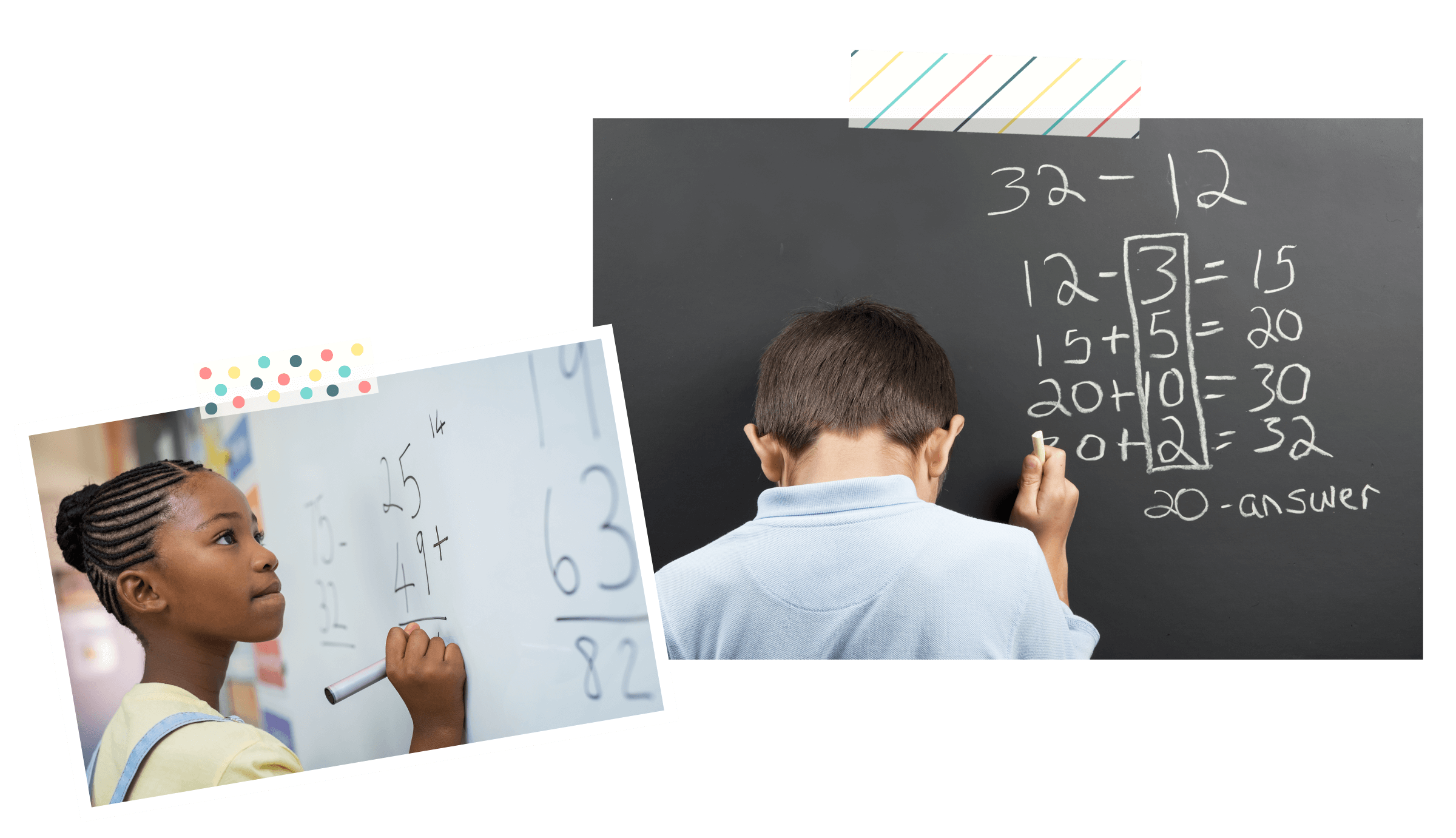For years, families across the US have been hearing cries like this from their children as they try to support math schooling at home. This has only been amplified since COVID-19 became our new reality. One day our students were in school learning from trained math teachers, and the next day it was suddenly our responsibility to continue the process. As a math educator with three school-age children of my own, even I was not immune to these battles.
Cue the social media memes. “These homeschool children are about to learn how to carry the 1!” is my personal favorite. Another one that makes me chuckle is, “Why did they change math? There wasn’t anything wrong with it!” I’ve seen posts like these floating around for years, but now that we are all expected to support our children through distance learning, it’s become even more prevalent.
So, why can’t we do math the old fashioned way?
The short answer is, you can! There is no such thing as old math and new math. Math is the same as it has always been. Numbers still add up to the same sums, multiplication facts are still important, geometry is still about spatial reasoning, and word problems still use extraneous information. The main difference in today’s classrooms, from the ones we grew up in, is that teachers today are actively seeking ways to develop an understanding of mathematical concepts and not just memorization of algorithms.
Take for example, the above problem. The student who worked on this had clearly memorized a series of steps, or an algorithm to achieve success, but you can see that there is a lack of understanding of the concept behind the algorithm. If the student had understood how the numbers related to each other, he would have no need for the standard algorithm of "going next door to borrow" or regrouping in order to solve it. We are now focused on moving beyond memorizing such algorithms and moving toward a deeper understanding of mathematical concepts so that students understand how numbers relate to each other.
One way that we can build number sense is by making sure students can solve problems in multiple ways. If students have a true understanding of how numbers relate to each other, they should ultimately be able to utilize several strategies to arrive at an answer. It’s true that some strategies will be more efficient and some will take a more circuitous route to the answer, but that’s part of the learning process. Developing number fluency means that students are accurate, flexible, and efficient in their problem solving. Could you build an entire house with a hammer? Probably, if you were open to new methods and were flexible with your plans. Would it be efficient and easy? Definitely not. As educators, we help guide students towards choosing the best tool for the job.
Teachers have spent countless hours in professional development workshops, reading literature on best practice, and learning from experts how to develop a strong number sense in their students. Now all of a sudden, parents and caregivers are being challenged to navigate this type of learning at home with little to no instruction. Let’s be clear, this is not an easy task! Nor is it fair to expect the new homeschool teachers to know how to guide students through multiple strategies in order to develop flexible and efficient thinking. However, if our goal is truly to help students see multiple paths to solving a problem, then why not teach them the way we learned? It’s just another strategy after all.
But, before you jump into showing your children the standard algorithm, think about the words you choose and how you present the information. By declaring that your way is better, or faster, or easier, you automatically undermine all the other strategies that they may have already learned. The truth is, nobody’s brain works in exactly the same way and for some kids, using number bonds, place value charts, or visual representations are going to be the most beneficial methods at this moment in time. Knowing that there is another strategy out there, one that involves regrouping (please don’t call it carrying! You’re not taking it anywhere!) is, however, still beneficial.
When working with your child, first, take a deep breath. This is going to take some patience! Begin by offering to show them the strategy that works best for you. Take some time to explain the process you use when adding/subtracting/multiplying/dividing numbers. These students are used to being told WHY they are doing something, so they’ll likely have questions. Have them try your method out a few times and then they can try out their current favorite method as well. Giving students the opportunity to see the similarities and differences in the methods will help to solidify the concept for them. Older students will likely start to make the connection that the standard algorithm that we recall so easily is simply a shorthand version of the place value method they are using.
Let’s be honest, none of us have a lot of time to devote to this right now, so don’t panic: there are some fantastic free resources available like Khan Academy, that can help you through this with digestible how-to videos for grades K-12 covering all topics imaginable. And don’t forget that you can always reach out to your child’s teachers for advice: they will want to support you because they know that their students (fingers crossed!) are returning to their classrooms and so they have a vested interest in supporting continuity of learning.


